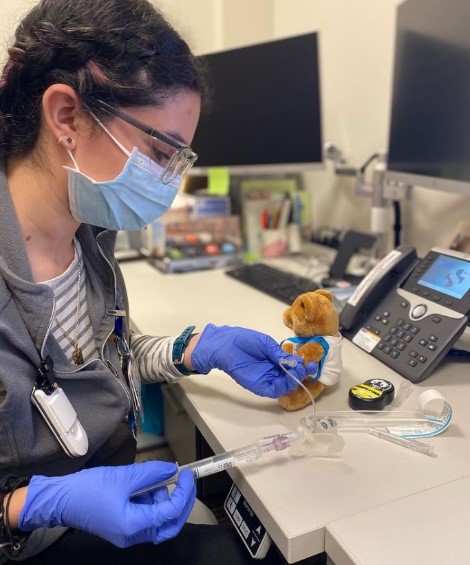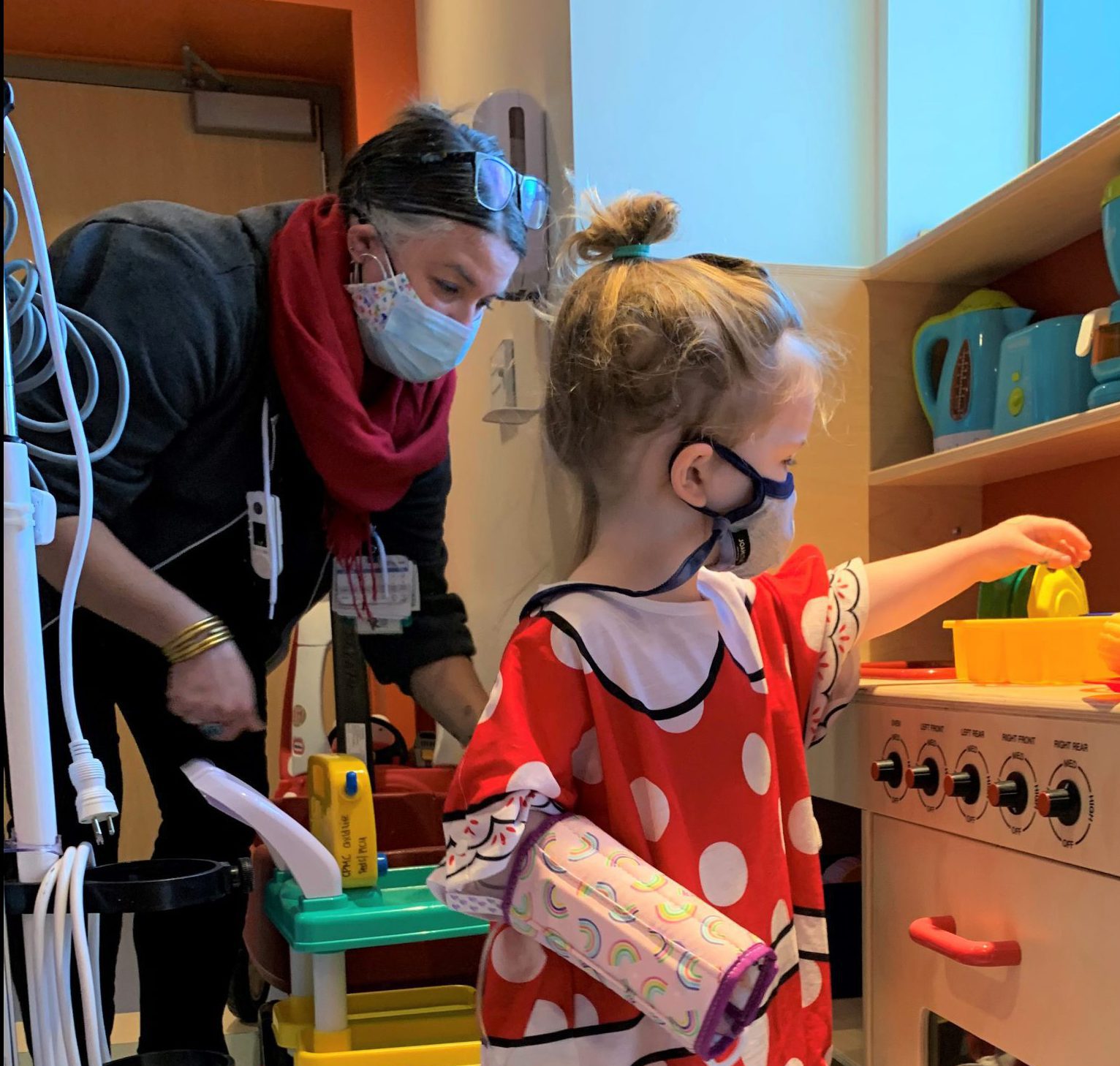Two Northern California medical centers say that incorporating a bit fun into a child’s hospital visit can help minimize their emotional trauma and improve the hospital experience for the entire family.
“As child life specialists, play is what we do,” says Lori Denault, supervisor for Sutter’s California Pacific Medical Center Child Life Department. “It’s an integral part of our jobs because it’s the way in which children communicate best.”
Both Sutter’s CPMC in San Francisco and Sutter Medical Center, Children’s Center, Sacramento offer comprehensive pediatric services, including the support of child life specialists.
A child life specialist’s job varies daily. Lori Denault, supervisor of CPMC’s Novack Family Child Life Services Program, says one of the team’s most important roles is explaining a child’s diagnosis in a way that’s appropriate for the child’s age and level of understanding.
“Some of the procedures young children and teens face can be distressing, and we know that with developmentally appropriate preparation, kids can do much better,” says Denault. “Outcomes are often more positive for the child, their medical teams and even parents and siblings,” she adds.
Medical play helps ease the fears & anxieties surrounding treatment

Angeles Lopez Mesa is a child life intern at Sutter’s CPMC in San Francisco.
Like Denault, Amy Medovoy, Child Life manager at SMCS, says her team strives to provide as many opportunities for play and expression as possible.
“First and foremost, play helps children to feel comfortable in the hospital to express themselves and develop resilience. Through play, children can process their emotions about their medical experiences, be in control and feel empowered, as well as gain insights and learn coping skills,” says Medovoy.
“We look for opportunities for play everywhere,” declares Medovoy, “whether at a bedside in the PICU (pediatric intensive care unit), in one of our playrooms, entering an operating room, or a scavenger hunt through the hallways!”
Both pediatric centers say that play is part of their medicine and treatment plan.
Play can look like acting out health care experiences like a patient’s upcoming surgery. Child life specialists often use a doll, toy or stuffed animal to allow the child to surface any fears and anxieties. For example, Denault describes a scenario in which Angeles Lopez Mesa prepares some medical play for a child using a teddy bear. In this case, the child is able to explore the how, where, why, what and when of IVs and medicine.
At CPMC and SMCS, child life specialists are assigned to every pediatric inpatient unit including the pediatrics unit, PICU and the newborn intensive care unit (NICU). Child life specialists are also available to care for children and families in outpatient services such as same-day surgery, radiology, emergency services and pediatric specialty care centers.





